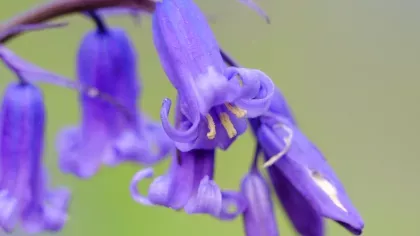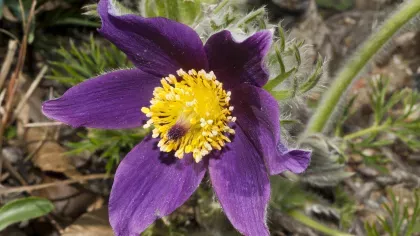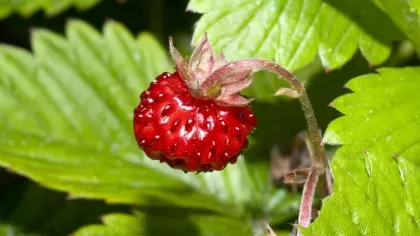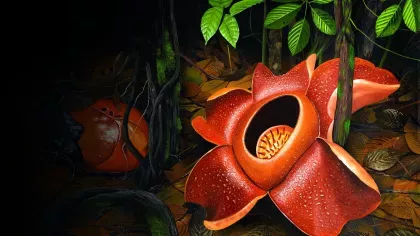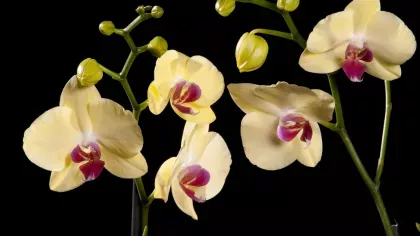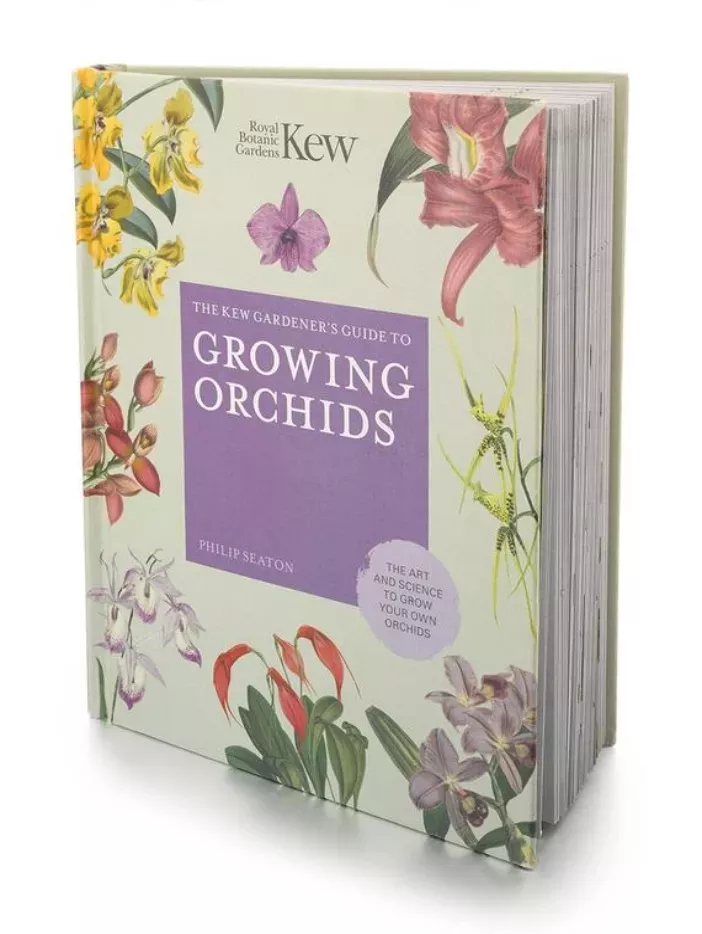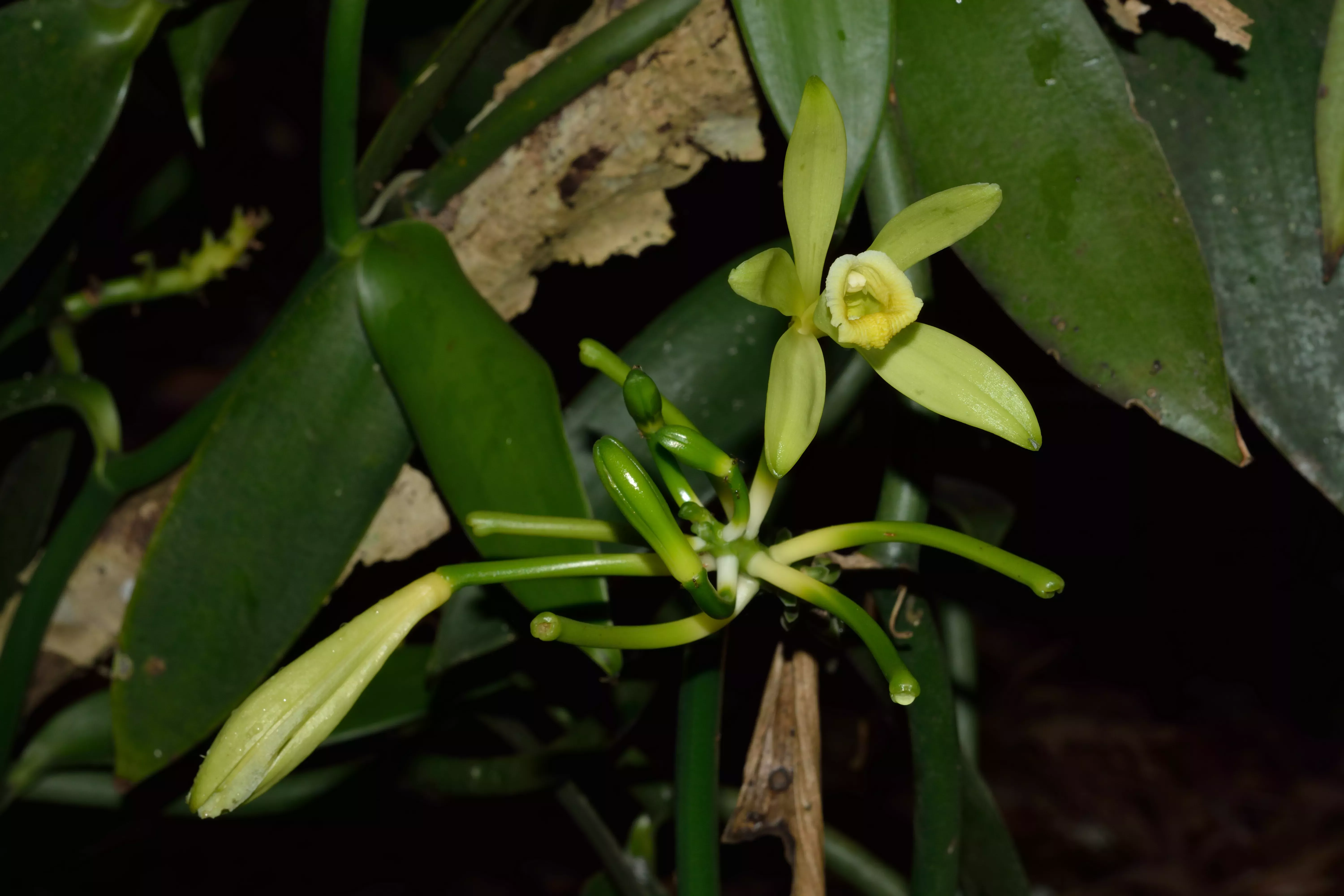
Vanilla
On this page
One of the most popular flavours in the world, vanilla was first used by Aztec people in Mexico to flavour cocoa.
It comes from the dried and cured fruits (pods) of the orchid Vanilla planifolia.
This plant grows in the tropical forests of Mexico and Central and northern South America but is now rare in the wild due to habitat reduction and overexploitation.
Vanilla is the second most expensive spice after saffron because of the intensive labour required to grow its pods.
Plant description
Vanilla is an evergreen vine that can reach up to 15m in length. It has thick stems and greenish to yellow flowers. The fruits are long, thin pods that contain thousands of tiny, black seeds. Vanilla has fleshy aerial roots that cling to trees and allow it to climb.
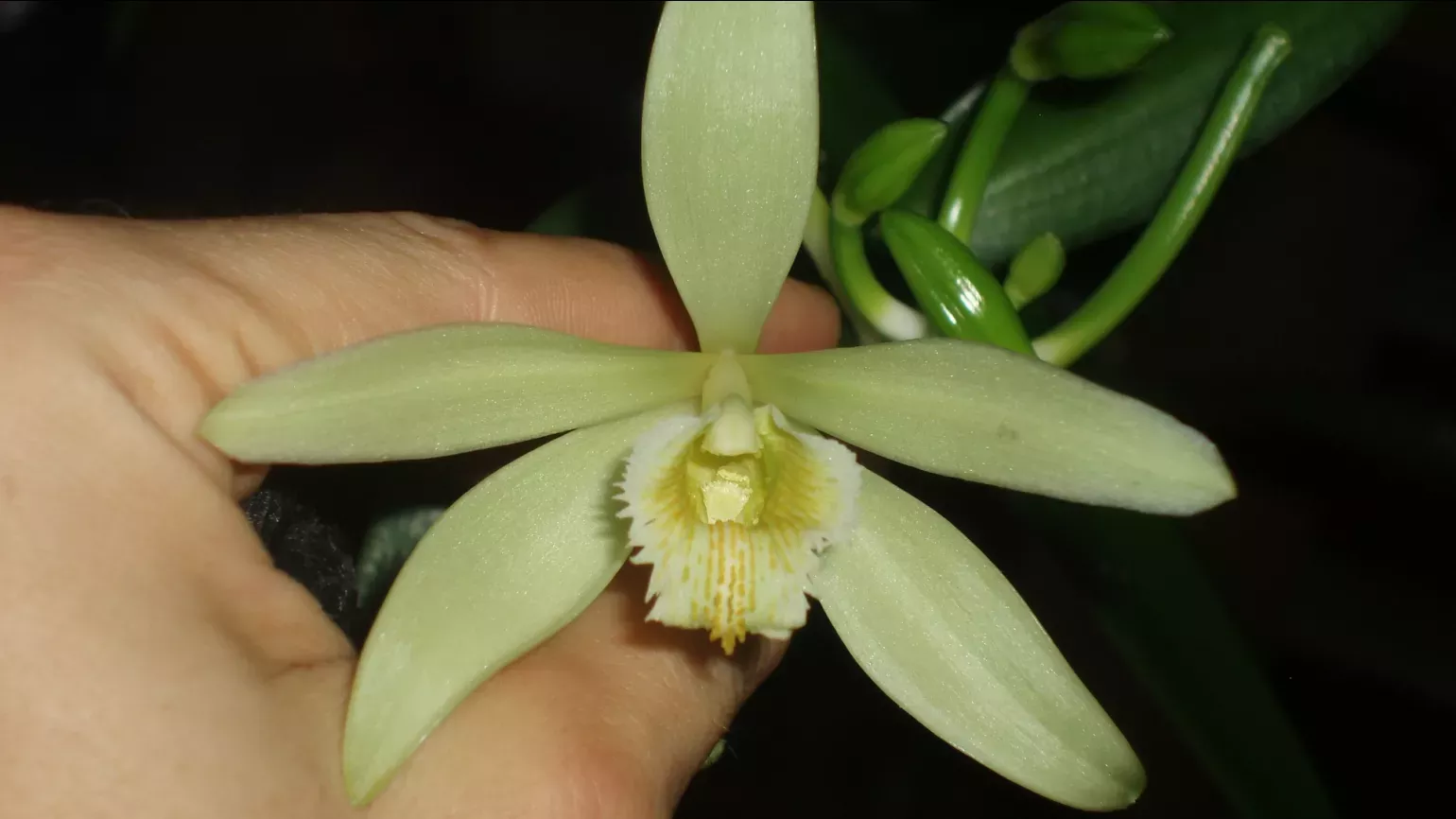


Plant uses
Beauty and cosmetics
Vanilla is one of the most important ingredients in perfumery because of its soft and sweet aroma.
Food and drink
The whole fruit (pod) or tiny seeds of vanilla are used as flavouring agents in food, including cream and custard-based sauces and confectionery.
Health
The main flavour molecule in vanilla, vanillin, has antimicrobial properties.
Vanilla has been used as an aphrodisiac and stimulant, and to relieve fevers and aid digestion. However, further research is needed to prove vanilla has these medicinal properties.
Vanilla products must be taken with care as they can cause an allergic response.
Did you know?
Outside of its native range, cultivated vanilla plants must be hand pollinated. The hand-pollination technique that is still used to this day was perfected in 1841 by a 12-year-old boy.
Much of the 'vanilla essence' commonly used today is actually made from wood pulp or coal tar.
Vanilla is one of the only orchids that produces fruit with huge economic value.
The distinctive aroma and flavour of vanilla is only released when the fruit is dried and cured by steaming and fermentation.
Where in the world?

Vanilla grows in subtropical/tropical, lowland, moist forests that are seasonally dry. It favours chalk or limestone terrain.
Find it in our gardens
Kew Gardens
A botanic garden in southwest London with the world’s most diverse living plant collection.
Location
In the tropical orchid zone of our Princess of Wales Conservatory and behind the scenes in our Tropical Nursery.
View map of Kew GardensOur work
Experts in our horticulture team here at Kew have perfected the art of propagation of the vanilla orchid.
We take cuttings from the stem and a minimum of three leaves and place them on moss. The cuttings are kept damp in a warm and humid environment until new growth starts.
We then plant them into hanging baskets with a compost mix made up of bark chips, pumice and charcoal that is only watered when it dries out. We mist the aerial roots once a day.
When in propagation, we keep the plants in a warm zone of the Tropical Nursery at Kew, with a minimum night temperature of 20˚C, and shaded when necessary.
Our horticulturalists also delicately hand pollinate the flowers of our vanilla plants to get some fruits (pods) as the usual pollinator of this plant, the Melipona bee, does not live outside of its native range.
This is an extremely tricky process done with a slim toothpick, with the added complication that this plant flowers irregularly when in cultivation and when it does, the flowers are only open for eight hours.
The pod can take around 3 weeks to form from pollination and if successful a whole year to ripen.
So, it is clear how this delicate flower has become such a global commodity.
